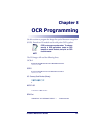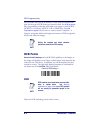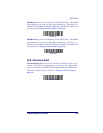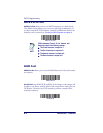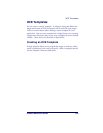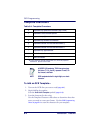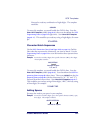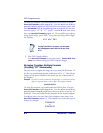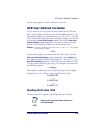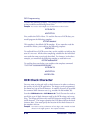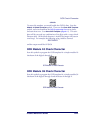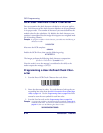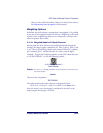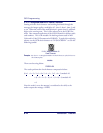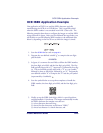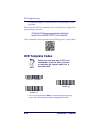
OCR User-Defined Variables
Product Reference Guide 8-9
You can string together as many templates as you need.
OCR User-Defined Variables
You can create up to two of your own user variables for an OCR tem-
plate. These variables will represent any OCR readable characters. The
user-defined variables are stored under the letters “g” and “h.” Creating
a user variable follows the same steps as creating a template, but instead
of scanning the
Enter OCR Template symbol, you scan the Enter User-
Defined Variable
symbol (page 8-16). The letters g and h can then be
used in an OCR template to define the variable you specified.
Example: You need a variable to represent the letters “A,” “B,” or “C.” The template
for this variable would be:
414243
To create this template, you would enable the OCR-A font. Scan the
Enter User-Defined Variable g symbol (page 8-16). Scan 414243 from
the
Programming Chart (the hex characters for “A,” “B,” and “C”). Scan
Save OCR Template (page 8-17). This will let you read either A or B or
C in any position where you place the g. For example, you could create
the following template:
ddddddggg
This template would then let you read data that began with six digits,
and had an A, B, or C trailing. So you would be able to read:
654321ABC
or
654321BAC
or
654321CCC
Reading Multi-Row OCR
The PowerScan 2D is capable of decoding multi-row OCR text.
NOTE
Reading rows longer than sixteen characters is
not recommended.



